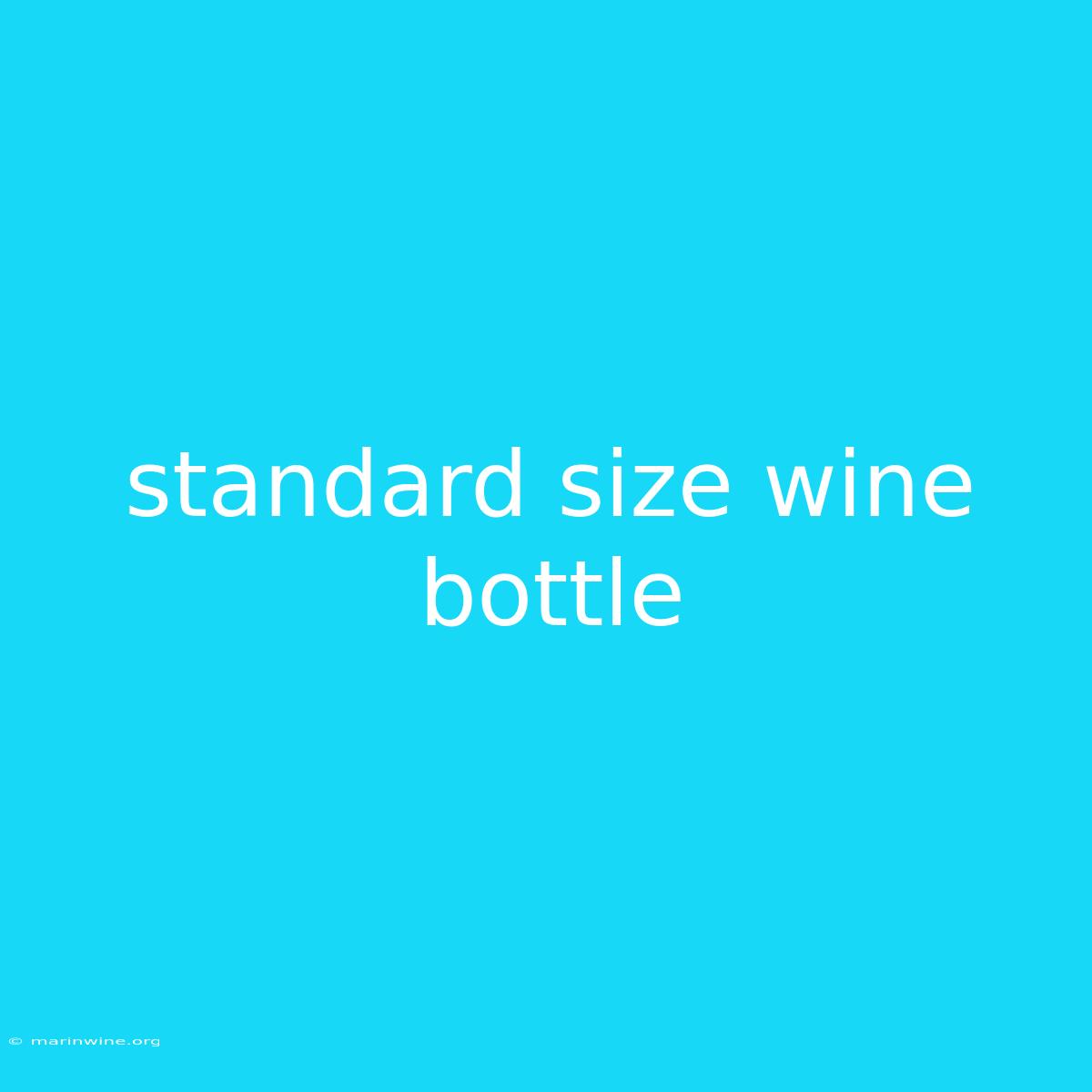The Mystery of the Wine Bottle: Uncorking the Standard Size
Have you ever wondered why wine bottles are always the same size? There's a reason behind this consistency, and it goes beyond simple tradition. Today, we'll delve into the world of wine bottles, exploring their standard size and the fascinating history behind it.
Why It Matters: Understanding the standard wine bottle size is crucial for both wine enthusiasts and everyday drinkers. It helps us understand how much wine we're getting, how to properly store it, and how to choose the right bottle for our needs. It's also essential for navigating the wine industry, where sizes and measurements play a significant role.
Key Takeaways of Standard Wine Bottle:
| Key Takeaway | Description |
|---|---|
| Standard Size: | 750 ml (25.4 fluid ounces) |
| Historical Origin: | Based on the Bordeaux bottle used for the trade of Bordeaux wine. |
| Bordeaux Bottle: | The standard 750 ml bottle, also referred to as a "claret bottle." |
| French Influence: | French winemakers, particularly in Bordeaux, played a crucial role in establishing this standard. |
The Story Behind the Standard Wine Bottle
The standard wine bottle size, as we know it, originated in the Bordeaux region of France. The Bordeaux bottle, or "claret bottle," became the dominant bottle for the region's renowned wines, and its popularity spread throughout Europe and eventually the rest of the world.
Bordeaux: Cradle of the Standard
The Bordeaux wine industry was booming in the 17th and 18th centuries. To facilitate trade, winemakers needed a consistent and reliable way to measure and package their wines. This led to the development of the Bordeaux bottle, which held approximately 750 ml.
Why 750 ml?
There are several theories about why the 750 ml size prevailed:
- Practicality: This size provided a balance between ease of handling, storage, and ensuring a sufficient quantity of wine for consumption.
- French Tradition: The French, known for their precision and standardization, were eager to maintain this level of control over their winemaking practices.
- Economics: The 750 ml bottle offered an efficient way to transport and store wine, leading to cost savings for producers.
The Standard Spreads: A Global Phenomenon
Over time, the Bordeaux bottle became the dominant standard for wine worldwide. Winemakers across the globe adopted this size for its practical and commercial advantages. It has become a familiar sight, symbolizing the global reach and impact of the wine industry.
The Modern World of Wine Bottles
While the standard 750 ml bottle remains ubiquitous, other sizes are emerging to meet different consumer needs. These include:
- Magnum: 1.5 liters (50.7 fluid ounces)
- Jeroboam: 3.0 liters (101.4 fluid ounces)
- Rehoboam: 4.5 liters (152.1 fluid ounces)
- Methuselah: 6.0 liters (202.8 fluid ounces)
- Salmanazar: 9.0 liters (304.2 fluid ounces)
These larger bottles are typically associated with special occasions or collectible wines.
FAQ for Standard Size Wine Bottle:
Q: What is the standard size of a wine bottle? A: The standard size of a wine bottle is 750 ml (25.4 fluid ounces).
Q: Why is the standard size so common? A: It originates from the Bordeaux region in France, where the "claret bottle" became the dominant size for wine.
Q: How many glasses are in a standard bottle of wine? A: A standard bottle contains approximately 5 glasses of wine.
Q: What are the advantages of using a standard wine bottle size? A: It simplifies the storage, transport, and consumption of wine for both producers and consumers.
Q: What are other sizes of wine bottles available? A: Besides the standard size, there are larger bottles like magnums, jeroboams, and even larger sizes like methuselah and salmanazar.
Tips for Choosing a Wine Bottle:
- Consider your needs: For everyday drinking, a standard 750 ml bottle is ideal. For special occasions or larger gatherings, consider larger bottle sizes.
- Check the label: The bottle size is often indicated on the label, usually in milliliters (ml) or liters (L).
- Store properly: Store wine bottles in a cool, dark, and dry place to preserve its quality.
Summary of Standard Wine Bottle:
This article has explored the history and significance of the standard wine bottle size. We discovered that the 750 ml "claret bottle" originated in Bordeaux and became a global standard thanks to its practicality, French tradition, and economic advantages.
In conclusion, the standard wine bottle size is a testament to the fascinating evolution of the wine industry. Understanding its history and significance helps us appreciate the wine we enjoy and navigate the world of wine with greater knowledge and confidence.

